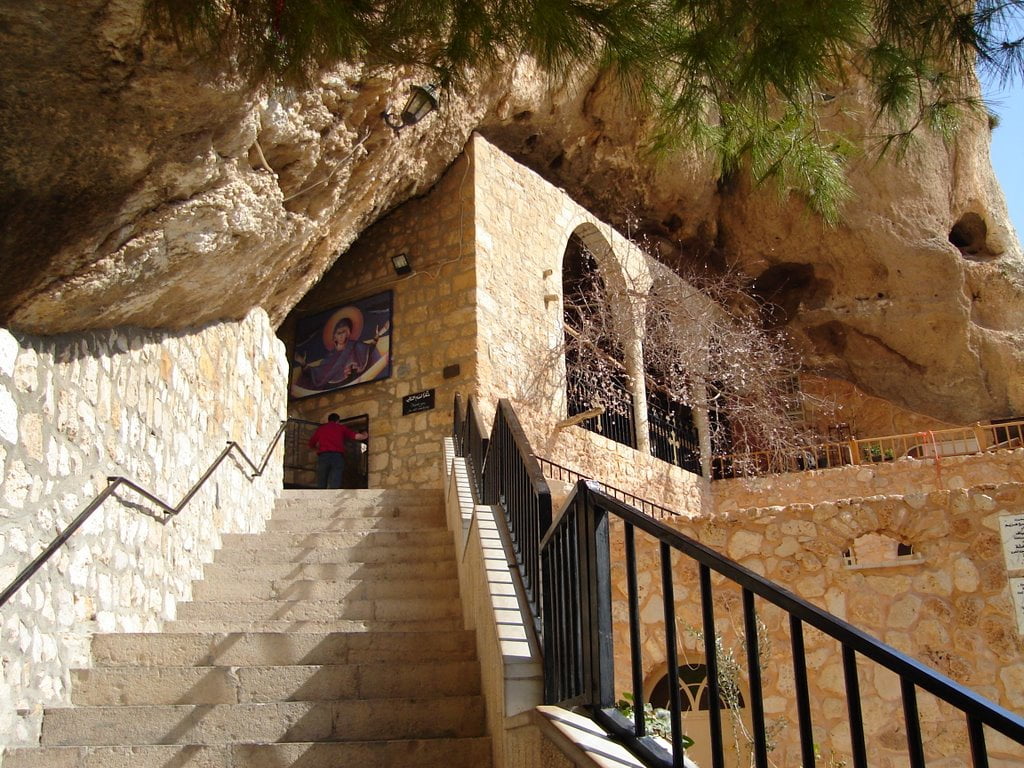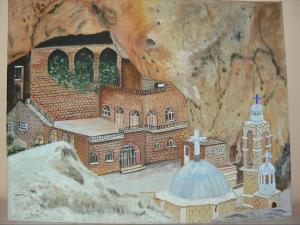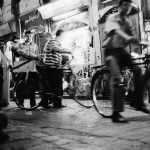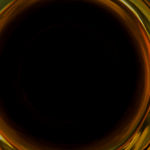It was a very beautiful day when I went to visit the oldest Christian city in the world, in the countryside outside Damascus. That city is Ma’loula.
When you enter this town, you feel that you are in a wrold of wonders. You would be taking by the beautiy of its mountains surrounding the whole village. Its houses grouped and colected on thise rocks as in birds nets hang on more than a house in height. Their roofs have transferred to roads and paths for the houses above. To reach it, I had to climb the mountain. It stands proudly near Damascus, telling the world: “I carry the great history of Christianity, and hold with my hand the great Islamic history as well.”
I have deep respect for this. I am Muslim, and we believe in Christianity and Judaism. Both of them are mentioned in our holy book, the Quran.
I climbed 600 steps to drink from a tiny mountain spring. This spring is inside the church. The place is very old and beautiful, and I could feel the great history it represents to the world.
The church is very close to a mosque. The people live together without any problems.
All the people of Syria, with all their different ethnicities, have lived peacefully for thousands of years. We are Syrian, and we live together without any problems, and our history is our best witness for this.
Malula, along with Jabadeen and Bakhaa, two smaller neighboring villages where Aramaic is also spoken, is still celebrated in Syria as a unique linguistic island. Many can still remember the days when old people in this cliff side village spoke only Aramaic, the language of Jesus. Recognised by Unesco as a “definitely endangered” language, Aramaic is spoken by 7,000 people in Maaloula, dominated by Greek Catholics (Melikites) whose churches and rites long pre-date the arrival of Islam and Arabic. “Aramaic is a constant reminder of the international importance of Syria in the ancient world, when it was a beacon of learning and culture that had a profound impact worldwide,” says David Taylor, author of The Hidden Pearl: Aramaic Heritage of the Syrian Orthodox Church. “It mirrors the cultural, linguistic and religious diversity that has always been of such great importance in Syria and is key to its long-term success.”
Image: Esam Hamzeh





